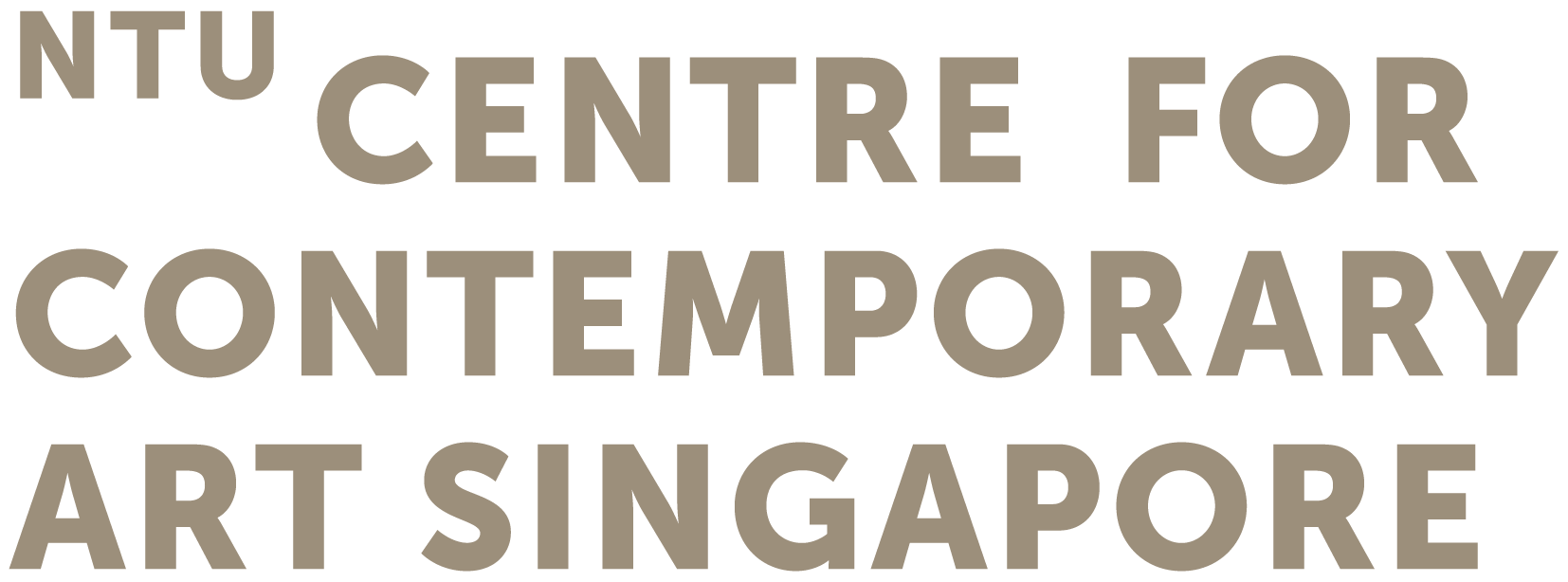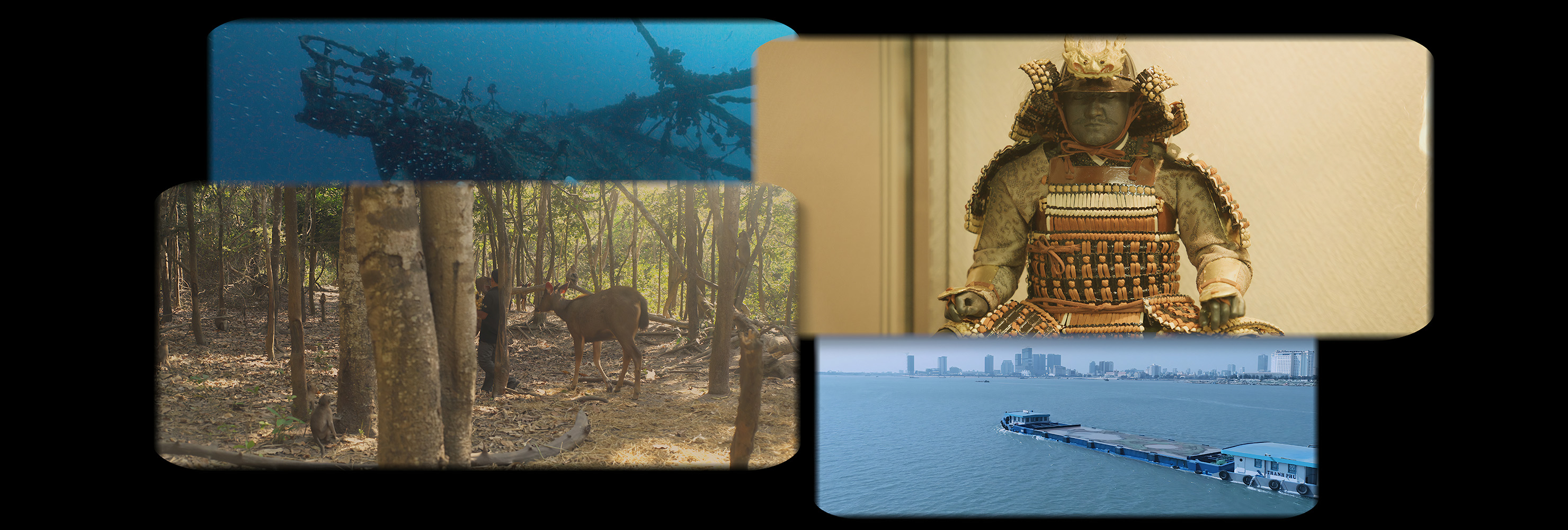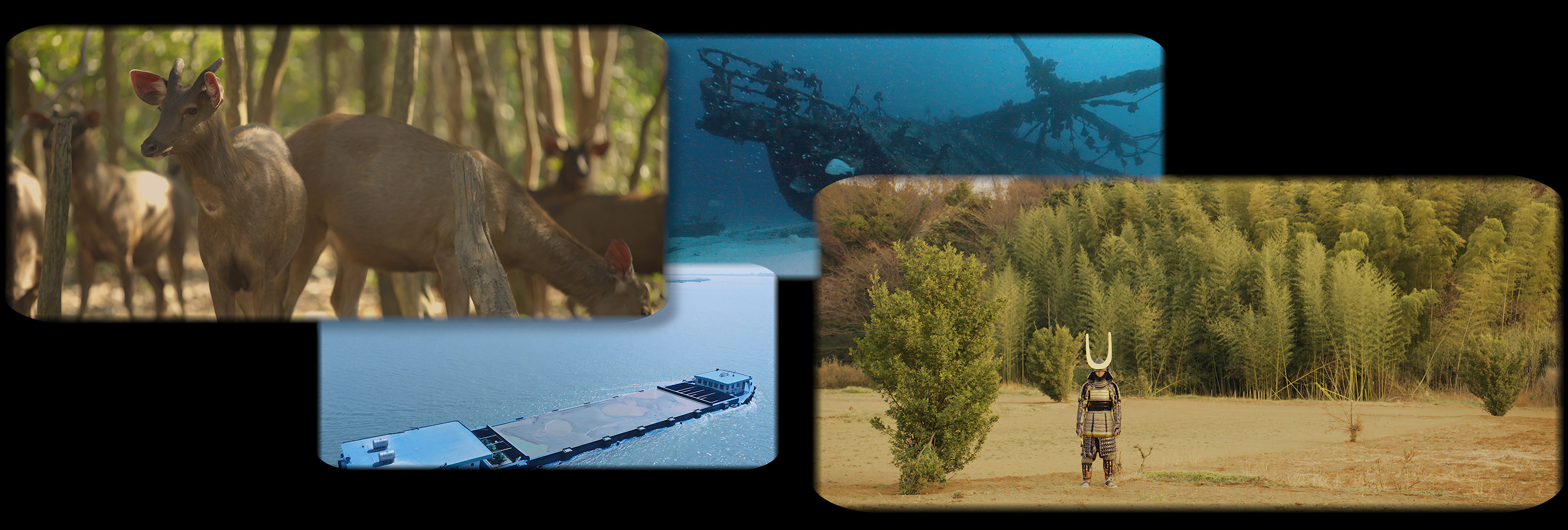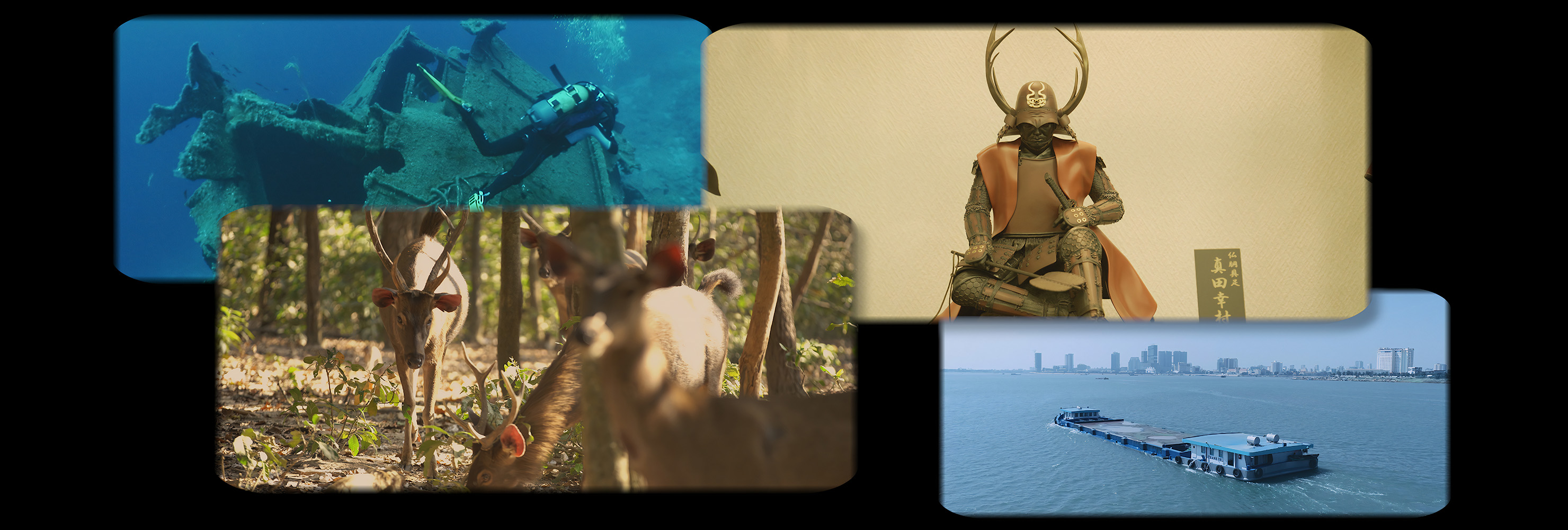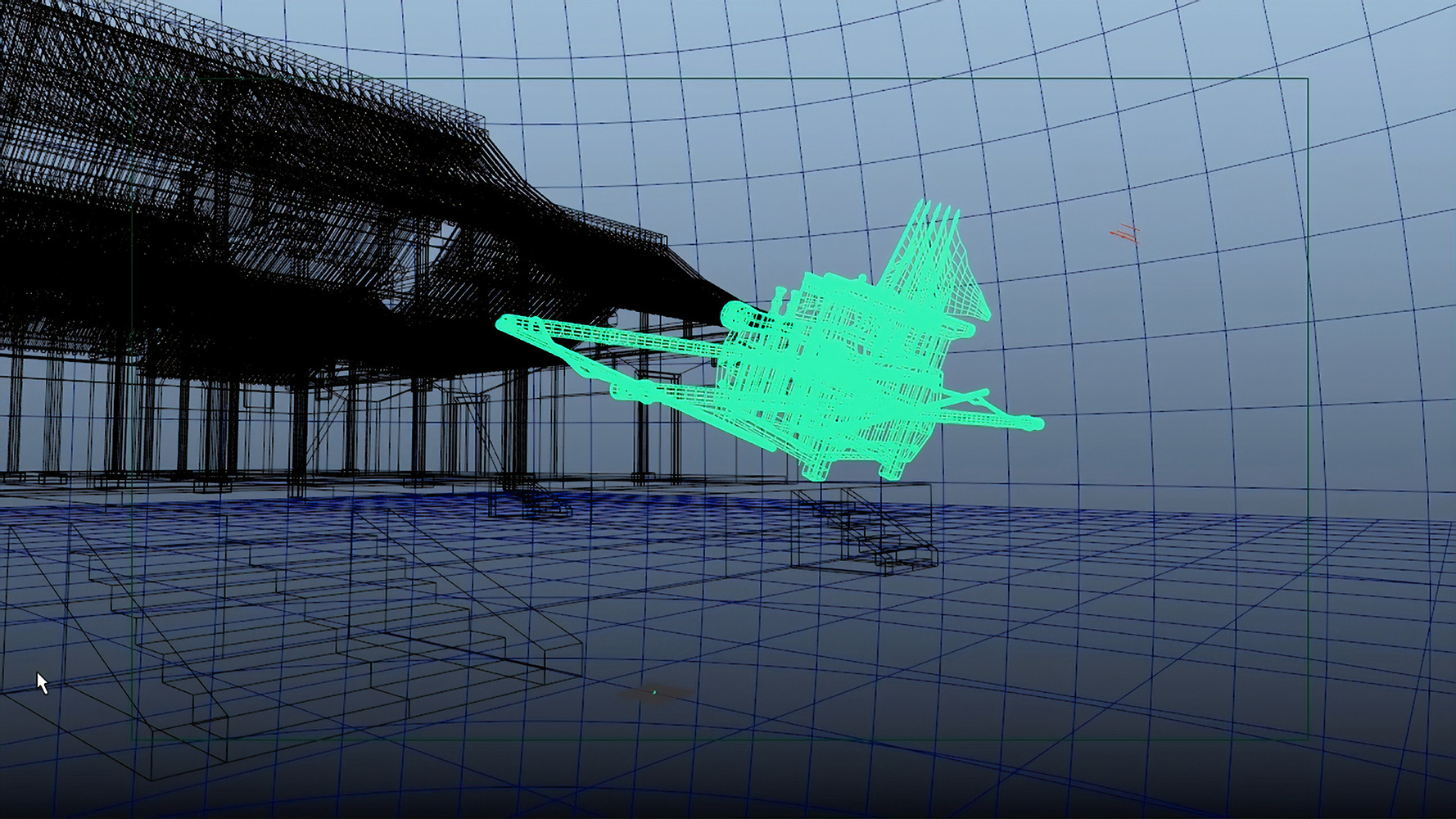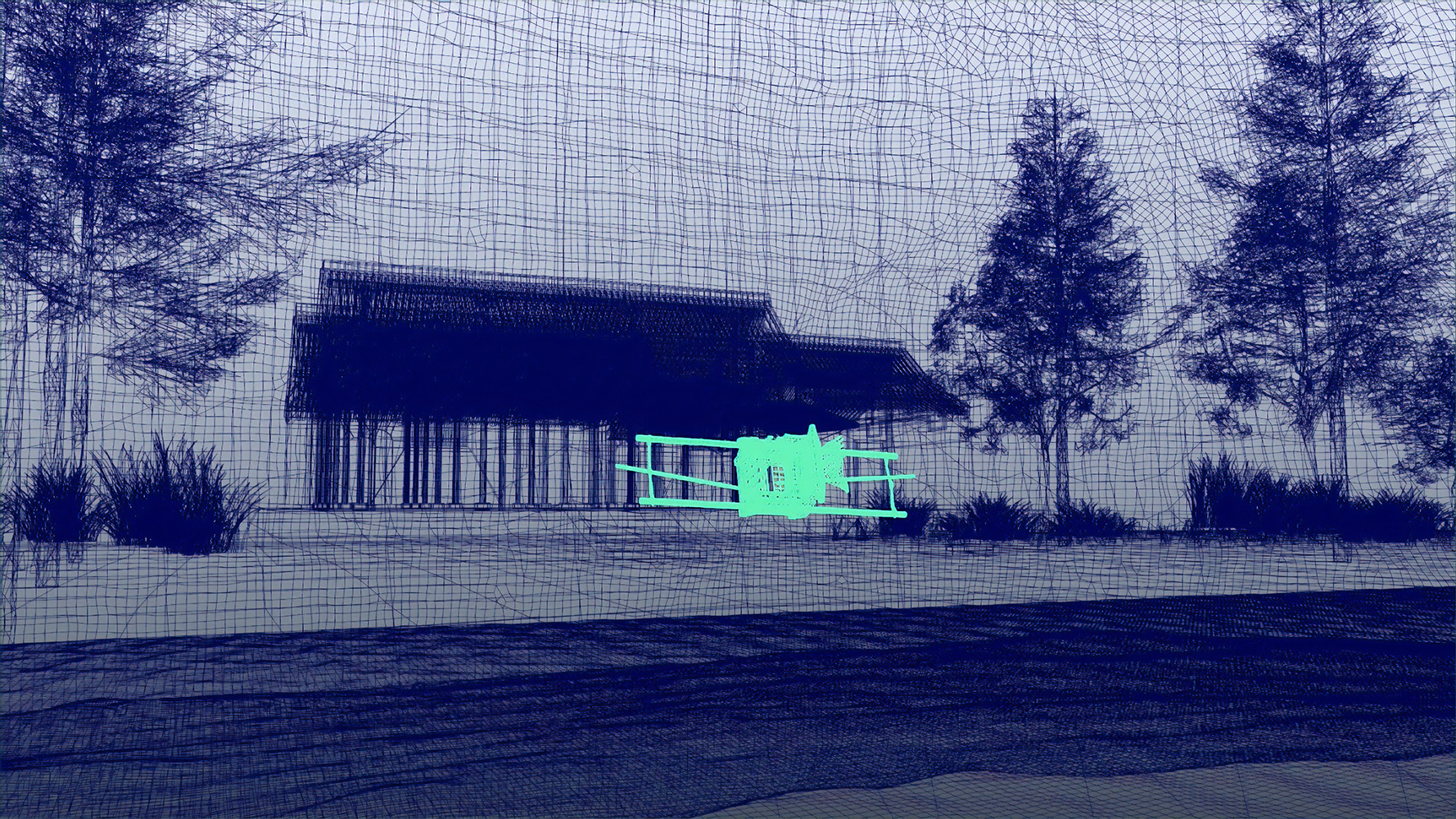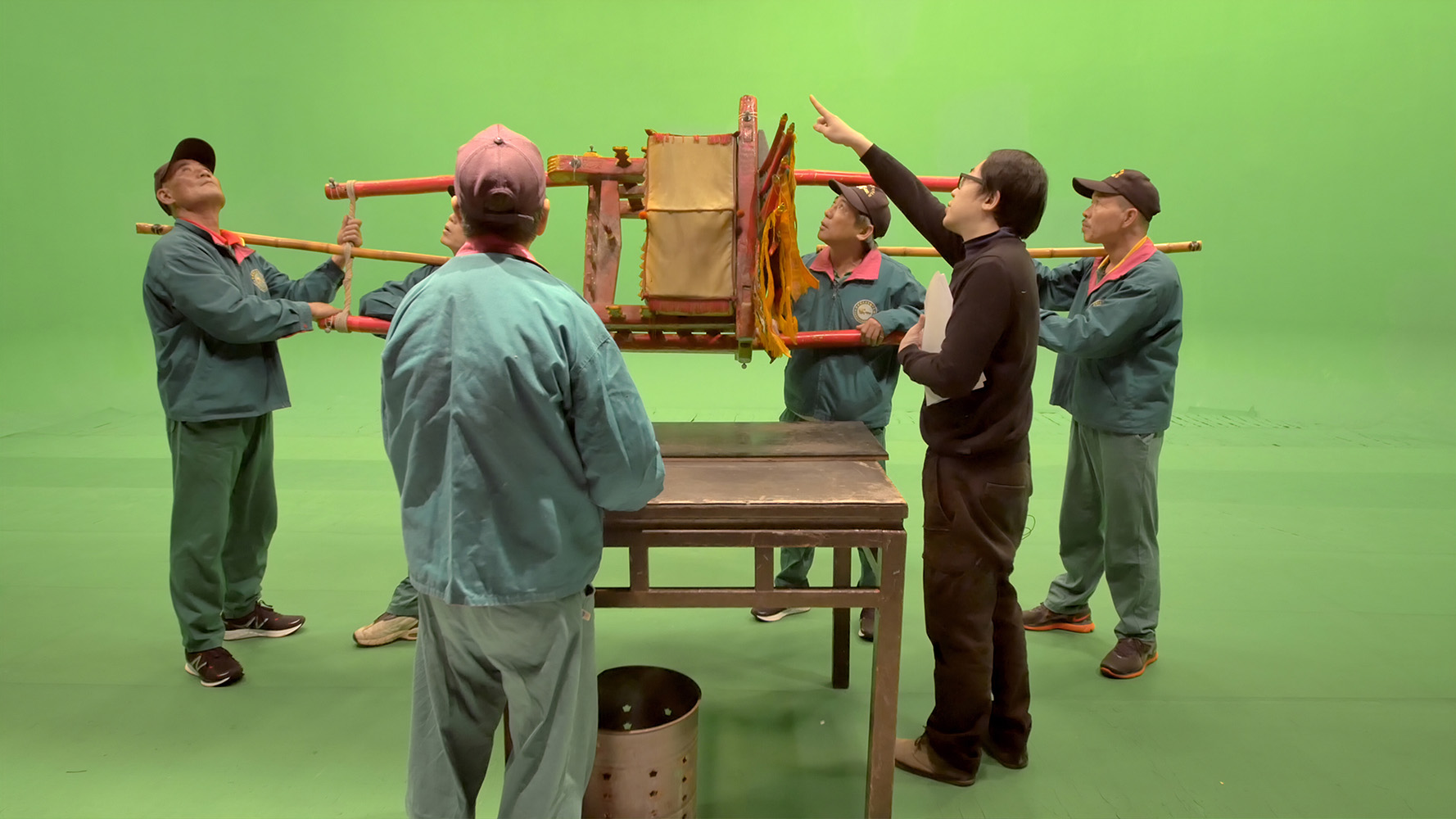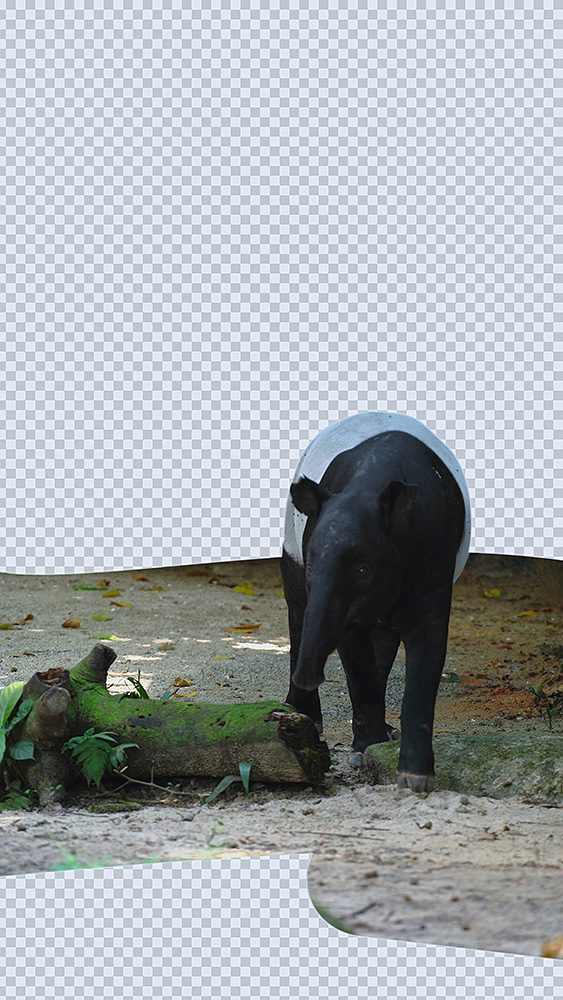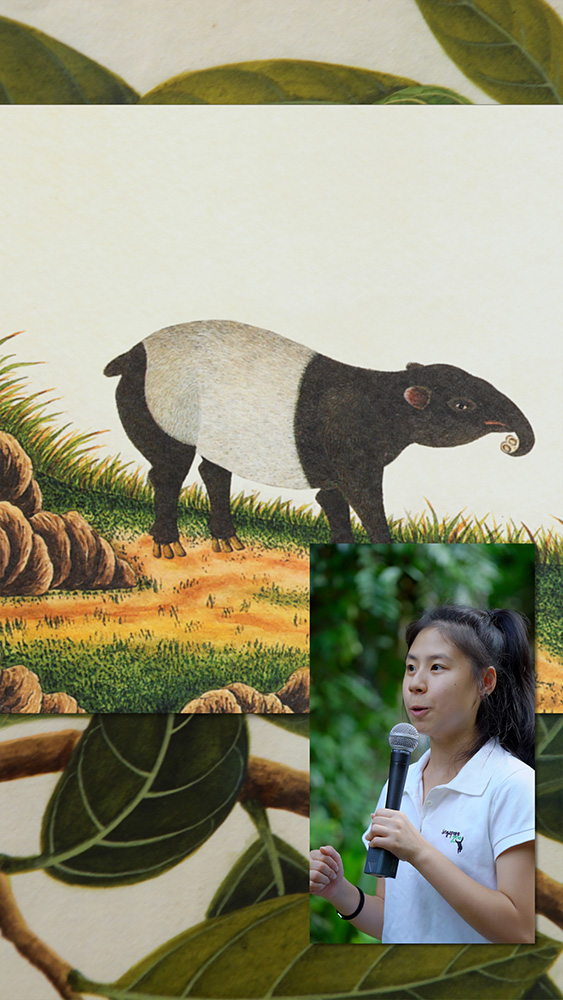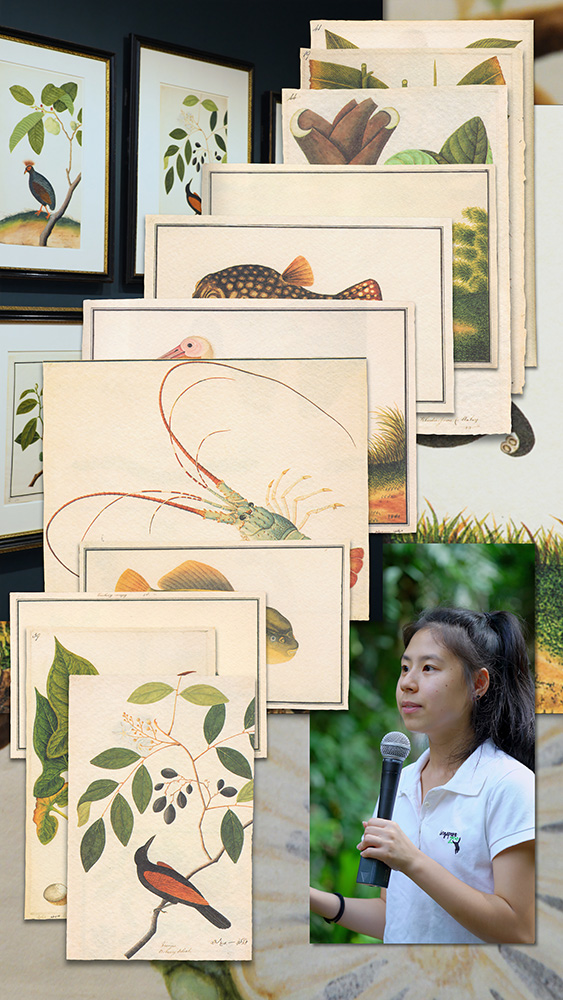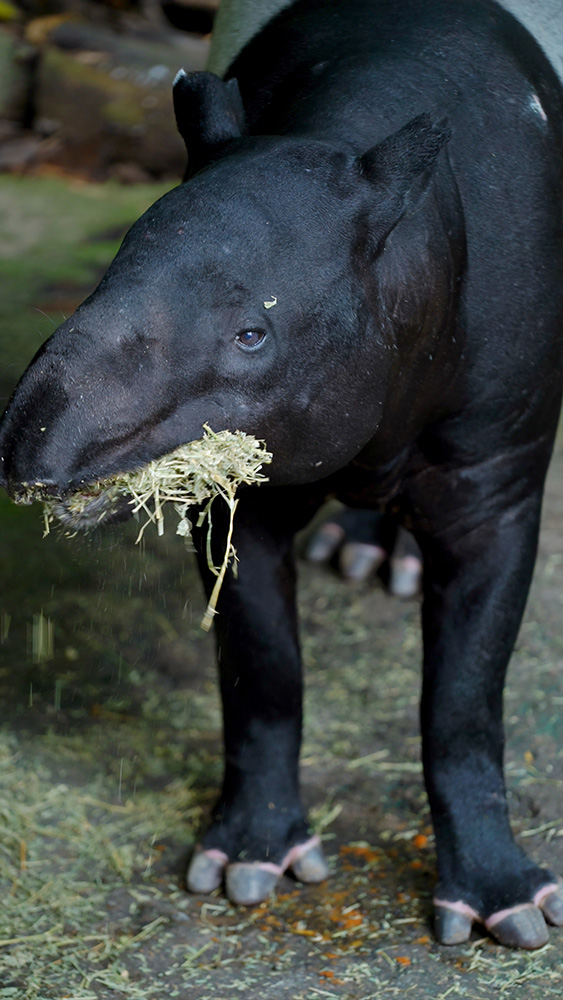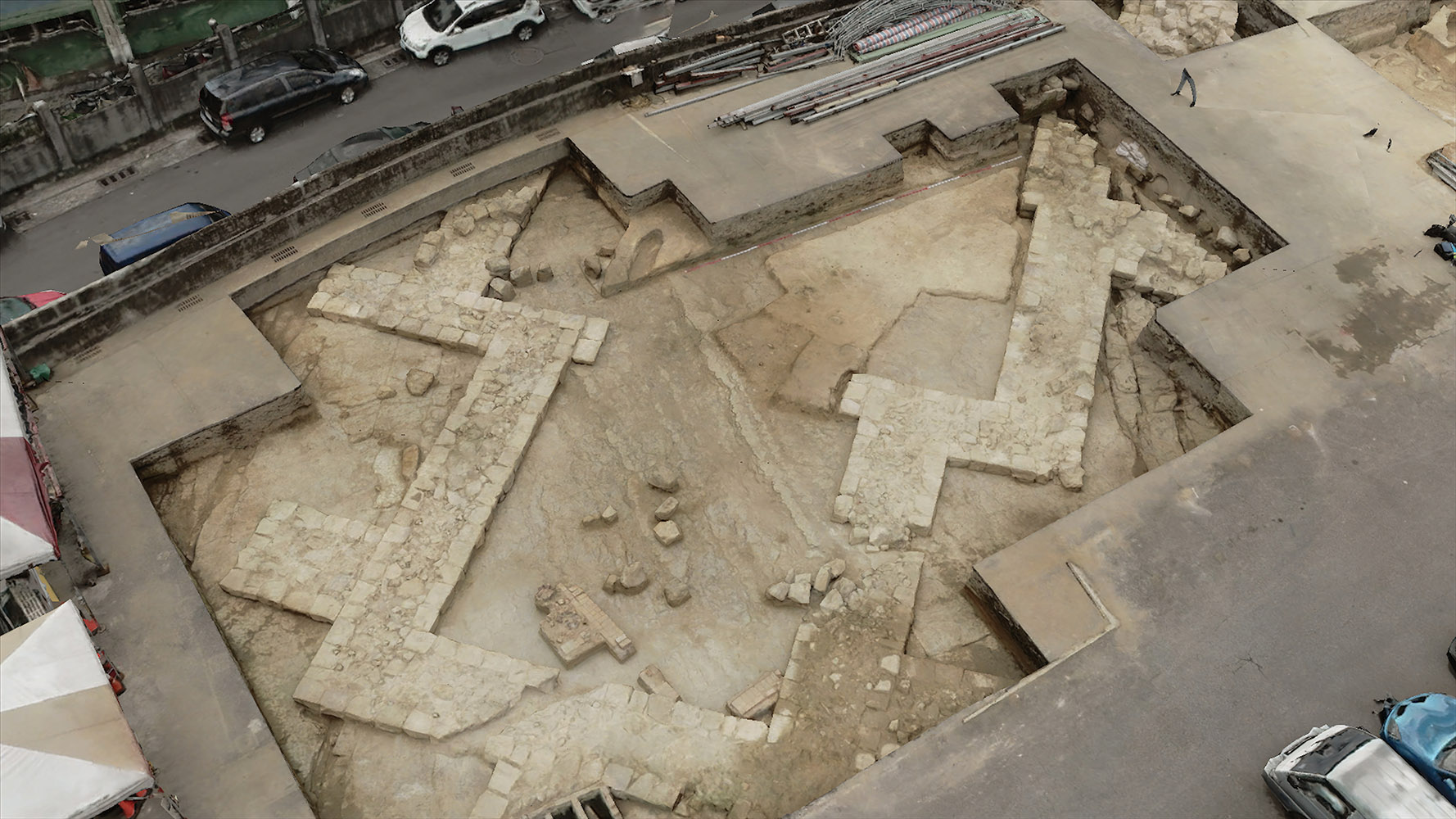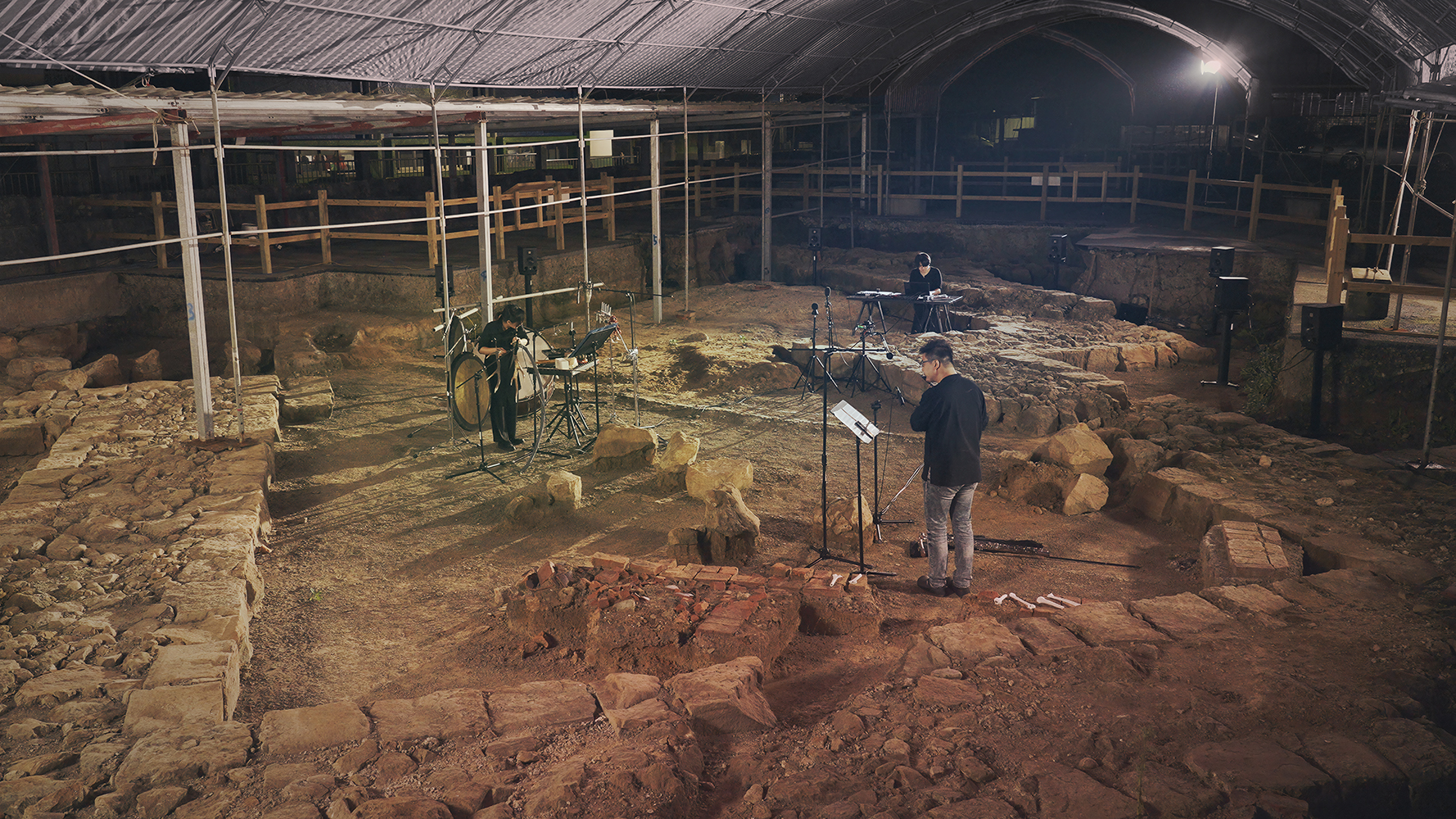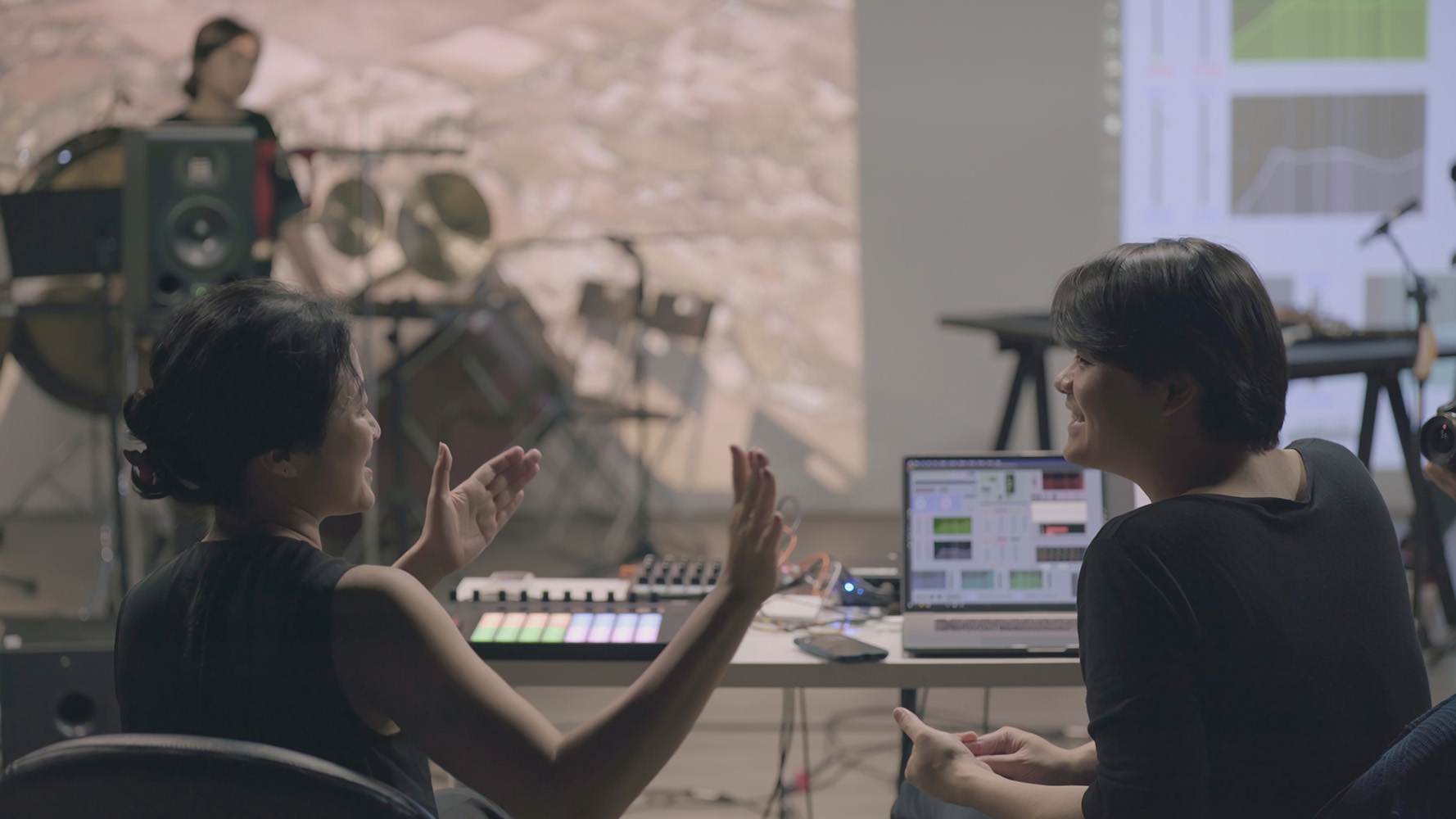
Hsu Chia-Wei, Spirit-Writing, 2016. Two-channel video. 9:45. Producer Le Fresnoy, coproducer Liang Gallery. Courtesy of the artist.
Projects
Samurai and Deer
Taking at its launch point the trading network of the 17th century, this work traces the common commodity of deer skin through hyper connections transcending time and space. Since European coinage was not popularly accepted in 17th-century Asia, the Dutch East India Company relied instead on barter, for example trading Indonesian spices for Taiwanese deer skins, and then reselling large quantities of deer skins in Japan for silver, and finally using this silver as capital for further trade.
Deer skin was in high demand in Japan, as Edo-period samurai culture consumed large quantities in armour, accessories, and clothing. Yet after years of overhunting, Taiwan could not keep up with the demand of deer skins in Japan, and as such the Dutch East India Company searched for alternative sources, finally coming Phnom Penh in Cambodia in an attempt to corner the deer skin market. As a result, they came into conflict with the Cambodian king, who launched a series of naval wars from 1643 to 1644 along the Mekong River to expel the Dutch East India Company, and in the end succeeding in their efforts.
The deer sin trade brought samurai culture, Dutch-Cambodian wars, and Taiwan into a complex, interconnected relationship, which the artist has brought into the contemporary age. Videos shot in Cambodian and Japan include oral narratives from keepers at the Phnom Penh Zoo, aerial footage of the Mekong River at the location where the Dutch and Cambodian armies fought, and moder-day cargo ships carrying gravel, as well as interview and handicraft footage from a Tokyo samurai armour workshop, internet imagery, and Google Maps data - a use of the modern-day digital Internet of Things to peer into the colonial Network of Things [1].
[1] Text provided by artist.
Spirit-writing
Video installation Spirit-Writing presents an unusual dialogue between artist Chia-Wei Hsu and the frog god Marshal Tie Jia who, allegedly was born in a small pond more than 1,400 years ago in Jiangxi, China. It is said that his temple in the Wuyi Mountains was destroyed during the Cultural Revolution so he has since been taking shelter on Matsu Island. The local villagers communicate with Marshal Tie Jia through a unique divination chair ritual, during which, the divination chair shakes violently under divine orders and proceeds to hit against the altar table and write down commands decreed by the divine power. Sometimes, legible words are written down, but there are also times when the writing needs to be deciphered through further gestures of pounding or making of noises. The villagers use this ritual to help them make decisions on many things in life.
Marshal Tie-Jia was invited by Chia-Wei Hsu to come to a film studio, where the divination chair ritual was performed to ask the frog god about the original conditions of his temple in the Wuyi Mountains. Hsu also reported to the Marshal about the approach and concept behind this art project. The process was made into a documentary, with an animation presented at the same time. Motion capture technology was applied in the film studio to document the movements of the divination char which was post-produced into a 3D animation. A 3D temple is also constructed according to the fragmented clues provided by Marshal Tia-Jia.
This dual-channel video installation showcases the dialogue between the artist and the frog god, integrating contemporary art and folk belief, the digital world and the realm of the divine.
Black and White - Malayan Tapir
The development in Southeast Asia progressed when the British East India Company chose Singapore as a commercial base and started its modernisation. As commercial development took place in Singapore, Europe also rapidly started to gather data and initiate the study of plants and animals also the establishment of museums. William Farquhar, the first commandant of the British East India Company in Malacca, hired a Chinese painter to do large-scale mapping and sorting of species in Malay Peninsula. As a result, a black and white creature, the Malayan Tapir, was recorded.
Due to the rapid development of biology, the naming and data recording of animals and plants had become a competitive field for many naturalists. However, Thomas Stamford Raffles, the commandant of the British East India Company in Penang, and William Farquhar, the commandant in Malacca, stayed engaged in political competition and started scientfic disputes. Their recorded collection of animals and plants at the time was shipped from place to place during the colonial era until it returned to Singapore to the National Heritage Board.
Black and White - Malayan Tapir, hopes to apply an encyclopaedic narrative style to deal with the equality between people and non-humans, man and nature, and to explore the changes in the way modern people view images. The scenes from the National Gallery Singapore, the National History Museum, Singapore Zoo to search engines and multiple windows. The political relationship between the history of the zoo in Southeast Asia and the colonial era leads to the drawing of a scientific illustration, biology, civil division, and the local legend of the Malayan Tapir [2].
[2] Text provided by the artist.
A Performance in the Church
The intact foundation of the walls and graves, as the remains of the Church of Todos los Santo, successively unearthed from 2018 to 2020 by the archaeological team, were the only and most direct evidence of the Spanish presence in Taiwan between 1626 and 1642. Taking the archaeological site as the point of departure, the artist organised an interdisciplinary musical performance via the encounters among archaeology, sound, and contemporary art. Archaeology, fascinating in a way that it allows contemporary audience to imagine a time and space we have never experienced before as they are absorbed in the tiny material pieces, thus conceptually becomes the center of the project which attempts to re-create sounds for the archaeological site which has slept in silence for centuries.
The artwork includes three videos: the first represents a musical performance taking place at the archaeological site, where the composer Hui Tak-Cheung transforms the archaeological elements into musical materials, including the instruments made in the models of archaeological findings, such as the flute made of a 3D-printed bone tool, or the percussion assembled with scums and antlers, while the floating animation in the video is also derived from the on-site findings. The second video captures the composer's conversation with the archaeologist Ellen Hsieh taking place in the sound studio where sound and archeology meet each other. The third video documents the on-site archeological excavation process and its animated 3D scanning [1].
Documentary Production: Taiwan Public Television Service Foundation
Sound Co-production: Center for Sound Arts and Acoustics Research, NTUA
Animation Co-production: Innovation Center for Art and Technology, NTUA
[1] Text provided by artist.
Biography

Chia-Wei Hsu’s (b. 1983, Taiwan) stresses specifically on the actionability underneath image creation when comes to the practice of art, while linking up the relationships of humans, materials, and places omitted in the narrative of the conventional history through establishing the incidents beyond camera. Hsu has had solo exhibitions at MoNTUE, Taipei, Taiwan (2019), Mori Art Museum, Tokyo, Japan (2018), Industrial Research Institute of Taiwan Governor-General’s Office at Liang Gallery, Taipei, Taiwan (2017), Huai Mo Village at Hong-Gah Museum, Taipei, Taiwan (2016) that was recognised by the Annual Grand Prize of the 15th Taishin Arts Award, Huai Mo Village Project at Art Basel, Hong Kong Convention and Exhibition Centre, Hong Kong, China (2016), and Position 2 at Van Abbemuseum, Eindhoven, Netherlands (2015). He has participated in exhibitions at Eye Filmmuseum, Amsterdam, Netherlands (2019), Biennial at Shanghai, Gwangju, Busan and Sydney (2018), 2 or 3 Tigers at Haus der Kulturen der Welt, Berlin, Germany (2017), 2016 TAIPEI BIENNIAL – Gestures and Archives of the Present, Genealogies of the Future at Taipei Fine Arts Museum, Taipei, Taiwan (2016), HUGO BOSS ASIA ART at Rockbund Art Museum, Shanghai, China (2013), The 55th International Art Exhibition – la Biennale di Venezia: This is not a Taiwan Pavilion at Palazzo Ducale, Venice, Italy (2013), and Faux Amis / An Ephemeral Video Library at JEU DE PAUME, Paris, France (2010).
He and a group of artists also run an art space in Taipei: Open-Contemporary Art Centre, an organisation with functions of curation, creation, narrative, inter-disciplinary exchange, education as well as the promotion of art that strives to seek every possibility to create communication in contemporary art. He is also the curator of Taiwan International Video Art Exhibition at Hong-Gah Museum, Taipei, Taiwan (2018), THAITAI: A Measure of Understanding at Bangkok Art and Culture Centre, Bangkok, Thailand (2012), and co-curate the 2019 Asian Art Biennial at National Taiwan Museum of Fine Arts (2019) with Ho Tzu Nyen [1].
[1] “HSU CHIA-WEI | 尊彩藝術中心 LIANG GALLERY,” accessed April 8, 2024, https://www.lianggallery.com/en/?portfolio=hsu-chia-wei.
Hsu Chia-Wei. Courtesy the artist.
Selected Exhibitions
Selected Solo Exhibitions
2019 Giant Panda, Deer, Malayan Tapir and East India Company, MoNTUE, Taipei, Taiwan
2019 Art Brussels: Hsu Chia-Wei Solo Exhibition - Black and White Project, Tour & Taxis, Brussels, Belgium
2019 TAIPEI DANGDAI: Hsu Chia-Wei Solo Exhibition - Black and White Project, Taipei Nangang Exhibition Center, Taipei, Taiwan
2018 Chia-Wei Hsu: Black and White - Malayan Tapir, The International Studio & Curatorial Program (ISCP), New York, United States
2017 Hsu Chia-Wei Solo Exhibition - Industrial Research Institute of Taiwan Governor General's Office, Liang Gallery, Taipei, Taiwan
Selected Residencies
2017 Artist-in-Residence, NTU Centre for Contemporary Art Singapore, Singapore
2016 Artist Residency Program, Sa Sa Art Project, Phnom Penh, Cambodia
2015 Artist Residency Program, Le Fresnoy Studio National Des Arts Contemporains, Tourcoing, France
2014 Artist Residency Program, Künstlerhaus Bethanien, Berlin, Germany
Selected Awards
2017 Huai Mo Village, The 15th Taishin Arts Award, Annual Grand Prize, Taiwan
2016 Theatre of Sacred Armour, The 49th WorldFest- Houston International Film and Video Festival, Gold Award for Documentary, USA
